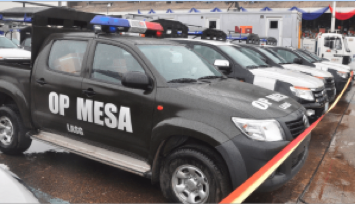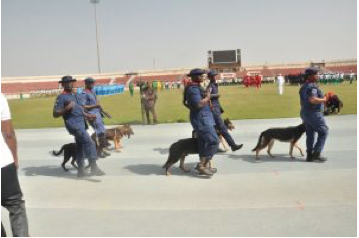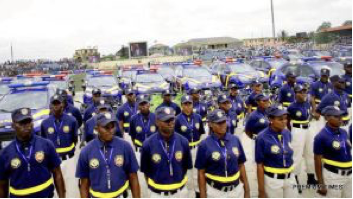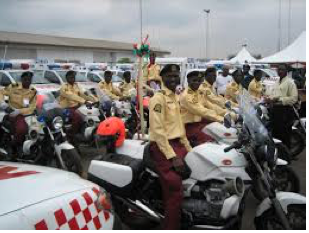Civic Education Lesson notes for primary 4 Third Term
ACCESS ALL LESSON NOTES
ACCESS ALL QUESTIONS AND ANSWERS
ACCESS ALL WORKSHEETS
ACCESS ALL JOBS ACCESS
ACCESS WAEC QUESTIONS AND ANSWERS
THIRD TERM
CIVIC EDUCATION
PRIMARY FOUR
Scheme of work
1.Revision for last term work
2. Traffic Regulations:
*Meaning of traffic regulation
*Traffic signs
*Importance of traffic regulation.
3. Traffic regulations continuation
*Reasons we need to obey traffic regulations
4. Agencies enforcing traffic regulation.
5. Problems of traffic regulations.
6. Solutions to problems of traffic regulations.
7. Attitude to accident victims.
8. Health issues.
*Personal Hygiene.
*Meaning of clothes
*Reasons people wears clothes.
9. Types of clothes suitable under different weathers.
10. Types of clothes suitable for different occupation.
11. How to keep our dirty clothes clean.
*Items used for keeping our clothes
12. Revision
13. Examination
WEEK2
Topic: Traffic Regulations
Subtopic: Traffic Rules and Regulation
Learning Objectives: At the end of the lesson, pupils should be able to:
1. Define traffic regulation
2. List some traffic rules and regulation
Resources & materials: Basic Civic Education Teacher’s Guide 4 For Primary Schools. By BJ Obebe, F.J Muazu, H O C Ambassador Brikins, S.O Koledoe.
Building Background/ connection to prior knowledge: Pupils are familiar with the topic in their previous classes.
CONTENT
Traffic regulations and the need for them
.
Traffic regulations are rules and regulations made for the control of movement of goods, people and vehicles on our roads. Traffic regulations are also called the Highway Code.
Traffic regulation can be defined as the rules and regulations that guide the behaviours or actions of road users. This is in place in order to prevent accidents and enhance the free flow of traffic
Some Traffic Rules and Regulations
1. Do not drink and drive: Road users are expected to avoid taking alcohol shortly before or while driving
2. Vigilance: Motorists and pedestrians crossing roads should be vigilant in order to avoid accidents.
3. Avoid hands free / earpiece: All road users are required to avoid all forms of hand free/ earpiece as this may not allow them to hear well and concentrate.
4. Wearing of seat belt: Motorist are expected to wear the seat -belt whenever they are driving, passengers should also use the seat belt where they are provided
5. Noise pollution: All road users are expected to guide against noise pollution. Drivers of vehicles should not blow their horns excessively to disturb or distract others
6. Obstruction parking: All road users should avoid packing on the road as this may lead to obstruction for other road users, thereby leading to heavy traffic.
7. Making calls while driving: Making and receiving phone calls should be avoided while driving as this can cause distraction and lead to accident.
8. Use of trafficators: Road users should trafficate before entering or leaving the road to indicate and create awareness for other vehicles coming behind; this will help to avoid accident
9. Speed limit: All motorists to adhere strictly to speed limits as provided
10. Bridges and zebra crossing point: Pedestrians should use pedestrians bridges or zebra crossing points where they are provided
Road Signs
Road signs are symbols which help road users gain full information about road the in other to avoid accidents. These signs are grouped into
1. Regulatory signs: These are signs that appear often in circular shapes. “They are divided into
(a) Mandatory regulatory signs: Mandatory regulatory signs appear with blue circles but without red border such as diversion signs , roundabout sign etc.
(b) Prohibitive Regulatory signs: They are signs with red and yellow circles. They are Stop sign, No light sign etc.The colour red for regulatory signs as a background colour is used to denote restriction.
2. Informative Signs: They are provided to give required information to road users.
following examples are signs you might find on the roads while you drive:
|
Category |
Description |
Example |
|
Regulatory: control |
To give you very specific instructions |
A round red sign with a white bar across it means no entry |
|
Regulatory: command |
To tell you to drive in a certain way |
A blue sign with a taxi on it means that only taxis may use that lane or area |
|
Regulatory: prohibition |
To prohibit you from driving in a certain way |
A round prohibition sign with a red line through an arrow pointing right means that there is no right turn allowed |
|
Regulatory: reservation |
To inform you that a particular lane or area may only be used by a certain type of vehicle |
A vertical rectangular sign with a bus on it means only buses may use that lane or area |
|
Warning: road layout |
To warn you of changes in the layout of the road |
A triangular warning sign with a “T” on it is informing you that there is a T-junction up ahead |
|
Warning: direction of movement |
To warn you to anticipate something up ahead |
A triangular sign with a bicycle on it is telling you to anticipate cyclists |
|
Guidance: location |
To let you know where you are |
A white sign with a name and the highway symbol lets you know what highway you are travelling on |
|
Guidance: route markers |
To give you information about the route you are travelling on |
A green sign with the names of nearby towns and numbers lets you know how far you are away from these places in kilometres |
|
Guidance: tourism |
To inform you of nearby attractions and places of interest |
A brown sign with the head of a kudu on it is used to indicate that you are approaching one of South Africa’s national parks |
|
Temporary: prohibition |
To warn you that you are temporarily prohibited from driving in a certain way |
A yellow sign with the number “100” in it and a red circle around the edge means that a speed limit of 100km/h has been temporarily introduced and may not be exceeded |
|
Temporary: warning |
To give instructions when a portion of road is under construction or if there is an accident scene |
A yellow sign with a man digging means that you should expect construction work up ahead |
For more info
.
The importance of road traffic signs
The teacher should draw the following road signs on cardboard sheets to show the children, and explain the importance of each of the signs to the
Traffic signals help in controlling pedestrian and vehicle traffic by means of assigning the priorities to some traffic movements to stimulate the flow of traffic. A properly designed, maintained, and located traffic signals may have one or more of the following advantages:
- It interrupts the heavy traffic at intersections to allow other vehicles or pedestrians to cross it.
- It helps in providing a continuous movement of traffic at a certain speed in a given route or way.
- It helps in reducing the severity and frequency of various types of accidents or crashes, most especially the right-angle collision.
- It increases the traffic handling capacity of a certain intersection.
- It makes the movement of traffic in a certain intersection in order
STRATEGIES AND ACTIVITIES
The Teacher revises the previous week lesson.
The Teacher introduces the new topic.
The Teacher explains the note in details.
The Teacher gives room for pupils to ask questions.
The Teacher evaluates the pupils.
ASSESSMENT AND EVALUATION
1 .State the meaning of technology.
2. List the importance of technology.
3. State the product of technology.
WRAP-UP(CONCLUSION)
Teacher goes over the topic once again to enhance better understanding.
ASSIGNMENT
List 5 importance of traffic signs
WEEK3
Topic: Traffic Regulations
Subtopic: Reasons for obeyingTraffic Rules and Regulation
Learning Objectives: At the end of the lesson, pupils should be able to:
1. Define traffic regulation
2. List some reasons for obeying traffic rules and regulation
Resources & materials: Basic Civic Education Teacher’s Guide 4 For Primary Schools. By BJ Obebe, F.J Muazu, H O C Ambassador Brikins, S.O Koledoe.
Building Background/ connection to prior knowledge: Pupils are familiar with the topic in their previous classes.
CONTENT
Reasons for obeying traffic regulations
Ask the pupils to explain the reasons why road users should obey traffic regulations, and guide them as they give the reasons they know.
The following are among the reasons for obeying traffic regulations:
1 It helps to check over-speeding. Accidents will be reduced when people obey the speed limit.
2 It reduces accidents on the road. If the traffic regulations guide the behaviour of road users, the number of accidents on the roads will reduce greatly.
3 Commercial drivers using the roads will behave well if they obey traffic regulations. They will not stop in the middle of the highway to pick up passengers.
4 There will be a smooth flow of traffic. The movement of vehicles will not be disturbed when road users obey traffic regulations.
Ways of obeying traffic regulations on our roads
Ask the pupils to mention various ways of obeying traffic regulations on our roads. Guide the pupils as they explain. The teacher should thereafter write the ways on the chalkboard and explain each of them to the pupils. The ways of obeying traffic regulations on our roads include the following:
1 Regular maintenance of vehicles. Our vehicles must be maintained regularly to prevent sudden breakdown on the road.
2 Slowing down at zebra crossings. We should slow down at zebra crossings to allow pedestrians to walk across safely. Pedestrians have an equal right to use the roads.
3 Avoiding over-speeding. Speeding excessively should be avoided, because it kills. We should observe the speed limit.
4 Respect for traffic signs. Road users must respect traffic signs. Signs like ‘No right turn,’ ‘No “U” turn,’ and ‘No entry for all vehicles’ should be observed, to avoid road hazards.
5 Observing the parking sign. We should not park on the road where there is a ‘No parking’ sign. Parking in such places obstruct the traffic flow. Similarly, drivers of commercial vehicles should pick passengers only at the right places.
The teacher should endeavour to obtain and read some stories of accidents from newspapers, and ask the pupils questions that would help to elicit greater appreciation of the need to obey traffic regulations.
STRATEGIES AND ACTIVITIES
The Teacher revises the previous week lesson.
The Teacher introduces the new topic.
The Teacher explains the note in details.
The Teacher gives room for pupils to ask questions.
The Teacher evaluates the pupils.
ASSESSMENT AND EVALUATION
1 .State the meaning of technology.
2. List the importance of technology.
3. State the product of technology.
WRAP-UP(CONCLUSION)
Teacher goes over the topic once again to enhance better understanding.
ASSIGNMENT
1. Mention 3 reasons for obeying traffic rules and regulations
2. List 5 ways we can obey traffic traffic rules and regulations
WEEK4
TOPIC: Agencies enforcing traffic regulations
BEHAVIOURAL OBJECTIVES: AT THE END OF THE LESSON, PUPILS SHOULD BE ABLE TO:
1.state the meaning of law enforcement agencies
INSTRUCTIONAL MATERIALS:
The teacher will teach the lesson with the aid of: charts and pictures showing technological products.
REFERENCE MATERIALS
Scheme of work
All relevant materials
9-Years Basic Education Curriculum
Online information
BUILDING BACKGROUND/CONNECTION TO PRIOR KNOWLEDGE: Pupils are familiar with the topic in their previous classes.
CONTENT OF THE LESSON
LAW ENFORCEMENT AGENCIES
Law enforcement agencies are set up by law to maintain internal security of the state. Lagos State has come up to inaugurate several security measures and outfits to maintain law and order.
For those visiting Lagos for the first time, you don’t have to be confused seeing several uniform men all around. Hence, for easy identification, we present the security agencies/agents you may likely come across in Lagos.
1. Rapid Response Squad (RRS)
The RRS is the name given to the police in Lagos. Like the regular function of the police, it is saddled with the responsibility of maintenance of law and order. It also protects, prevents and investigates criminal activities.
Other sub-outfits are the Mobile Police (MOPOL) and Special anti Robbery Squad (SARS).

2. OP MESA
Operation MESA is a joint Internal Security Operational platform made up of the Army, the Navy and the Air force. They operate in synergy with the Police and it is meant to complement the efforts of the Police in crime fighting in the State.

3. Nigeria Security and Civil Defence Corps (NSCDC)
The Nigeria Security and Civil Defence Corps (NSCDC) is a paramilitary outfit with the statutory function to protect lives, properties and majorly government installations and facilities from vandalism.

4. Vehicle Inspection Officer (VIO)
The Vehicle Inspection Officers popularly known as VIO are responsible for the issuance of road worthiness certificate to all vehicles as well as maintenance of sanity on various roads and highways by ensuring that all vehicles plying such roads are roadworthy at all time. However, the current governor of Lagos has recently banned them from operating in Lagos. As a result, you may not get to see them often.

5. Lagos Neighborhood Safety Corps (LNSC)
The Lagos Neighborhood Safety Corps (LNSC) commonly referred to as the ‘community police’ is a uniformed security agency established to assist the Police and other security agencies to maintain law and order in the state. They operate by the use of their local knowledge to achieve maximum grass root intelligence gathering and community policing.


6. Lagos State Traffic Management Authority (LASTMA)
Lagos State Traffic Management Authority was established to transform the state transport system to ensure free flow of traffic in the state and also reduce road accidents. Commercial bus drivers usually tag them as ‘nightmares’ like the VIO. Humorously, most bus drivers and conductors are fond of pronouncing LASTMA as ‘Lasman’ or ‘Linesman’


ACCESS ALL QUESTIONS AND ANSWERS
ACCESS WAEC QUESTIONS AND ANSWERS






